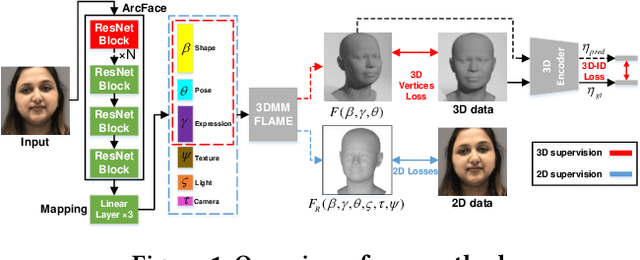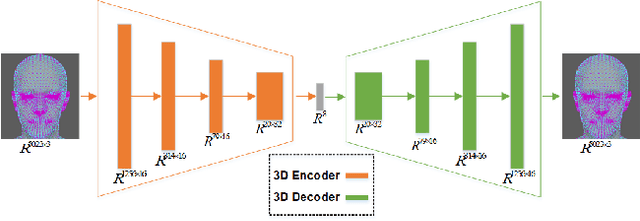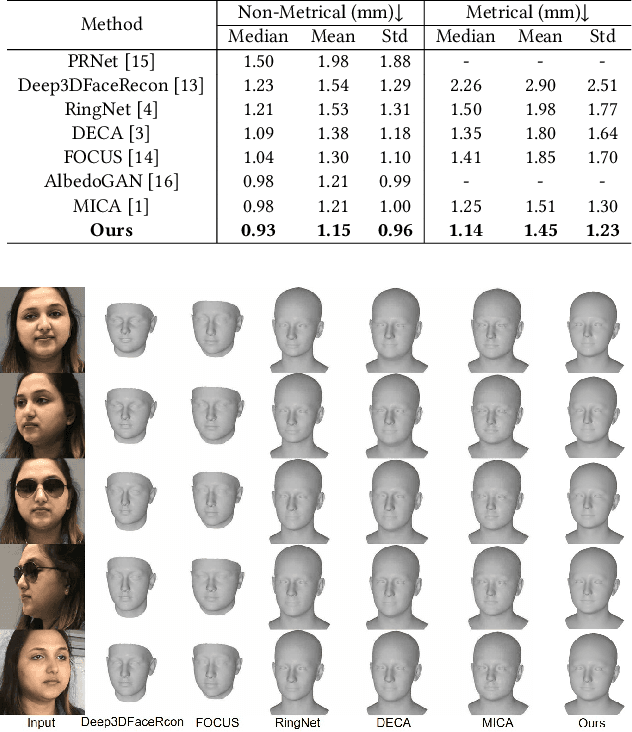Ziyao Liu
Deep Learning Approaches for Anti-Money Laundering on Mobile Transactions: Review, Framework, and Directions
Mar 13, 2025Abstract:Money laundering is a financial crime that obscures the origin of illicit funds, necessitating the development and enforcement of anti-money laundering (AML) policies by governments and organizations. The proliferation of mobile payment platforms and smart IoT devices has significantly complicated AML investigations. As payment networks become more interconnected, there is an increasing need for efficient real-time detection to process large volumes of transaction data on heterogeneous payment systems by different operators such as digital currencies, cryptocurrencies and account-based payments. Most of these mobile payment networks are supported by connected devices, many of which are considered loT devices in the FinTech space that constantly generate data. Furthermore, the growing complexity and unpredictability of transaction patterns across these networks contribute to a higher incidence of false positives. While machine learning solutions have the potential to enhance detection efficiency, their application in AML faces unique challenges, such as addressing privacy concerns tied to sensitive financial data and managing the real-world constraint of limited data availability due to data regulations. Existing surveys in the AML literature broadly review machine learning approaches for money laundering detection, but they often lack an in-depth exploration of advanced deep learning techniques - an emerging field with significant potential. To address this gap, this paper conducts a comprehensive review of deep learning solutions and the challenges associated with their use in AML. Additionally, we propose a novel framework that applies the least-privilege principle by integrating machine learning techniques, codifying AML red flags, and employing account profiling to provide context for predictions and enable effective fraud detection under limited data availability....
An Investigation into Value Misalignment in LLM-Generated Texts for Cultural Heritage
Jan 03, 2025



Abstract:As Large Language Models (LLMs) become increasingly prevalent in tasks related to cultural heritage, such as generating descriptions of historical monuments, translating ancient texts, preserving oral traditions, and creating educational content, their ability to produce accurate and culturally aligned texts is being increasingly relied upon by users and researchers. However, cultural value misalignments may exist in generated texts, such as the misrepresentation of historical facts, the erosion of cultural identity, and the oversimplification of complex cultural narratives, which may lead to severe consequences. Therefore, investigating value misalignment in the context of LLM for cultural heritage is crucial for mitigating these risks, yet there has been a significant lack of systematic and comprehensive study and investigation in this area. To fill this gap, we systematically assess the reliability of LLMs in generating culturally aligned texts for cultural heritage-related tasks. We conduct a comprehensive evaluation by compiling an extensive set of 1066 query tasks covering 5 widely recognized categories with 17 aspects within the knowledge framework of cultural heritage across 5 open-source LLMs, and examine both the type and rate of cultural value misalignments in the generated texts. Using both automated and manual approaches, we effectively detect and analyze the cultural value misalignments in LLM-generated texts. Our findings are concerning: over 65% of the generated texts exhibit notable cultural misalignments, with certain tasks demonstrating almost complete misalignment with key cultural values. Beyond these findings, this paper introduces a benchmark dataset and a comprehensive evaluation workflow that can serve as a valuable resource for future research aimed at enhancing the cultural sensitivity and reliability of LLMs.
Efficient Federated Unlearning with Adaptive Differential Privacy Preservation
Nov 17, 2024



Abstract:Federated unlearning (FU) offers a promising solution to effectively address the need to erase the impact of specific clients' data on the global model in federated learning (FL), thereby granting individuals the ``Right to be Forgotten". The most straightforward approach to achieve unlearning is to train the model from scratch, excluding clients who request data removal, but it is resource-intensive. Current state-of-the-art FU methods extend traditional FL frameworks by leveraging stored historical updates, enabling more efficient unlearning than training from scratch. However, the use of stored updates introduces significant privacy risks. Adversaries with access to these updates can potentially reconstruct clients' local data, a well-known vulnerability in the privacy domain. While privacy-enhanced techniques exist, their applications to FU scenarios that balance unlearning efficiency with privacy protection remain underexplored. To address this gap, we propose FedADP, a method designed to achieve both efficiency and privacy preservation in FU. Our approach incorporates an adaptive differential privacy (DP) mechanism, carefully balancing privacy and unlearning performance through a novel budget allocation strategy tailored for FU. FedADP also employs a dual-layered selection process, focusing on global models with significant changes and client updates closely aligned with the global model, reducing storage and communication costs. Additionally, a novel calibration method is introduced to facilitate effective unlearning. Extensive experimental results demonstrate that FedADP effectively manages the trade-off between unlearning efficiency and privacy protection.
Trustworthy, Responsible, and Safe AI: A Comprehensive Architectural Framework for AI Safety with Challenges and Mitigations
Aug 23, 2024Abstract:AI Safety is an emerging area of critical importance to the safe adoption and deployment of AI systems. With the rapid proliferation of AI and especially with the recent advancement of Generative AI (or GAI), the technology ecosystem behind the design, development, adoption, and deployment of AI systems has drastically changed, broadening the scope of AI Safety to address impacts on public safety and national security. In this paper, we propose a novel architectural framework for understanding and analyzing AI Safety; defining its characteristics from three perspectives: Trustworthy AI, Responsible AI, and Safe AI. We provide an extensive review of current research and advancements in AI safety from these perspectives, highlighting their key challenges and mitigation approaches. Through examples from state-of-the-art technologies, particularly Large Language Models (LLMs), we present innovative mechanism, methodologies, and techniques for designing and testing AI safety. Our goal is to promote advancement in AI safety research, and ultimately enhance people's trust in digital transformation.
Towards Evaluating the Robustness of Automatic Speech Recognition Systems via Audio Style Transfer
May 15, 2024



Abstract:In light of the widespread application of Automatic Speech Recognition (ASR) systems, their security concerns have received much more attention than ever before, primarily due to the susceptibility of Deep Neural Networks. Previous studies have illustrated that surreptitiously crafting adversarial perturbations enables the manipulation of speech recognition systems, resulting in the production of malicious commands. These attack methods mostly require adding noise perturbations under $\ell_p$ norm constraints, inevitably leaving behind artifacts of manual modifications. Recent research has alleviated this limitation by manipulating style vectors to synthesize adversarial examples based on Text-to-Speech (TTS) synthesis audio. However, style modifications based on optimization objectives significantly reduce the controllability and editability of audio styles. In this paper, we propose an attack on ASR systems based on user-customized style transfer. We first test the effect of Style Transfer Attack (STA) which combines style transfer and adversarial attack in sequential order. And then, as an improvement, we propose an iterative Style Code Attack (SCA) to maintain audio quality. Experimental results show that our method can meet the need for user-customized styles and achieve a success rate of 82% in attacks, while keeping sound naturalness due to our user study.
Unbridled Icarus: A Survey of the Potential Perils of Image Inputs in Multimodal Large Language Model Security
Apr 08, 2024


Abstract:Multimodal Large Language Models (MLLMs) demonstrate remarkable capabilities that increasingly influence various aspects of our daily lives, constantly defining the new boundary of Artificial General Intelligence (AGI). Image modalities, enriched with profound semantic information and a more continuous mathematical nature compared to other modalities, greatly enhance the functionalities of MLLMs when integrated. However, this integration serves as a double-edged sword, providing attackers with expansive vulnerabilities to exploit for highly covert and harmful attacks. The pursuit of reliable AI systems like powerful MLLMs has emerged as a pivotal area of contemporary research. In this paper, we endeavor to demostrate the multifaceted risks associated with the incorporation of image modalities into MLLMs. Initially, we delineate the foundational components and training processes of MLLMs. Subsequently, we construct a threat model, outlining the security vulnerabilities intrinsic to MLLMs. Moreover, we analyze and summarize existing scholarly discourses on MLLMs' attack and defense mechanisms, culminating in suggestions for the future research on MLLM security. Through this comprehensive analysis, we aim to deepen the academic understanding of MLLM security challenges and propel forward the development of trustworthy MLLM systems.
Object-level Copy-Move Forgery Image Detection based on Inconsistency Mining
Apr 03, 2024Abstract:In copy-move tampering operations, perpetrators often employ techniques, such as blurring, to conceal tampering traces, posing significant challenges to the detection of object-level targets with intact structures. Focus on these challenges, this paper proposes an Object-level Copy-Move Forgery Image Detection based on Inconsistency Mining (IMNet). To obtain complete object-level targets, we customize prototypes for both the source and tampered regions and dynamically update them. Additionally, we extract inconsistent regions between coarse similar regions obtained through self-correlation calculations and regions composed of prototypes. The detected inconsistent regions are used as supplements to coarse similar regions to refine pixel-level detection. We operate experiments on three public datasets which validate the effectiveness and the robustness of the proposed IMNet.
A Learning-based Incentive Mechanism for Mobile AIGC Service in Decentralized Internet of Vehicles
Mar 29, 2024Abstract:Artificial Intelligence-Generated Content (AIGC) refers to the paradigm of automated content generation utilizing AI models. Mobile AIGC services in the Internet of Vehicles (IoV) network have numerous advantages over traditional cloud-based AIGC services, including enhanced network efficiency, better reconfigurability, and stronger data security and privacy. Nonetheless, AIGC service provisioning frequently demands significant resources. Consequently, resource-constrained roadside units (RSUs) face challenges in maintaining a heterogeneous pool of AIGC services and addressing all user service requests without degrading overall performance. Therefore, in this paper, we propose a decentralized incentive mechanism for mobile AIGC service allocation, employing multi-agent deep reinforcement learning to find the balance between the supply of AIGC services on RSUs and user demand for services within the IoV context, optimizing user experience and minimizing transmission latency. Experimental results demonstrate that our approach achieves superior performance compared to other baseline models.
Threats, Attacks, and Defenses in Machine Unlearning: A Survey
Mar 26, 2024



Abstract:Machine Unlearning (MU) has gained considerable attention recently for its potential to achieve Safe AI by removing the influence of specific data from trained machine learning models. This process, known as knowledge removal, addresses AI governance concerns of training data such as quality, sensitivity, copyright restrictions, and obsolescence. This capability is also crucial for ensuring compliance with privacy regulations such as the Right To Be Forgotten. Furthermore, effective knowledge removal mitigates the risk of harmful outcomes, safeguarding against biases, misinformation, and unauthorized data exploitation, thereby enhancing the safe and responsible use of AI systems. Efforts have been made to design efficient unlearning approaches, with MU services being examined for integration with existing machine learning as a service, allowing users to submit requests to remove specific data from the training corpus. However, recent research highlights vulnerabilities in machine unlearning systems, such as information leakage and malicious unlearning requests, that can lead to significant security and privacy concerns. Moreover, extensive research indicates that unlearning methods and prevalent attacks fulfill diverse roles within MU systems. For instance, unlearning can act as a mechanism to recover models from backdoor attacks, while backdoor attacks themselves can serve as an evaluation metric for unlearning effectiveness. This underscores the intricate relationship and complex interplay among these mechanisms in maintaining system functionality and safety. This survey aims to fill the gap between the extensive number of studies on threats, attacks, and defenses in machine unlearning and the absence of a comprehensive review that categorizes their taxonomy, methods, and solutions, thus offering valuable insights for future research directions and practical implementations.
3D Face Reconstruction Using A Spectral-Based Graph Convolution Encoder
Mar 08, 2024


Abstract:Monocular 3D face reconstruction plays a crucial role in avatar generation, with significant demand in web-related applications such as generating virtual financial advisors in FinTech. Current reconstruction methods predominantly rely on deep learning techniques and employ 2D self-supervision as a means to guide model learning. However, these methods encounter challenges in capturing the comprehensive 3D structural information of the face due to the utilization of 2D images for model training purposes. To overcome this limitation and enhance the reconstruction of 3D structural features, we propose an innovative approach that integrates existing 2D features with 3D features to guide the model learning process. Specifically, we introduce the 3D-ID Loss, which leverages the high-dimensional structure features extracted from a Spectral-Based Graph Convolution Encoder applied to the facial mesh. This approach surpasses the sole reliance on the 3D information provided by the facial mesh vertices coordinates. Our model is trained using 2D-3D data pairs from a combination of datasets and achieves state-of-the-art performance on the NoW benchmark.
 Add to Chrome
Add to Chrome Add to Firefox
Add to Firefox Add to Edge
Add to Edge